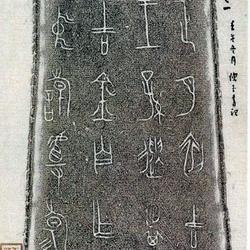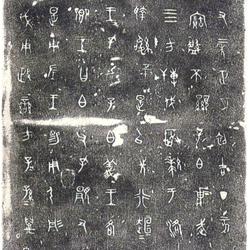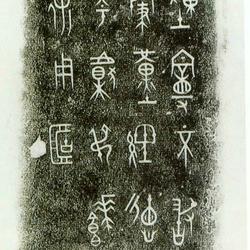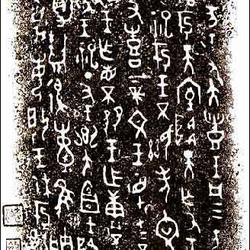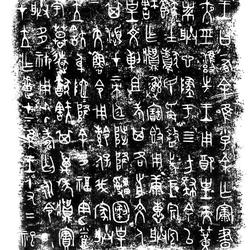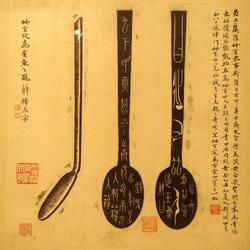It was made by a famous historian during the reign of King Xuan of Zhou Dynasty. It is a cooking utensil from the Western Zhou Dynasty. There are three tripods handed down from generation to generation, including one each in the collections of the Shanghai Museum, the National Palace Museum, and the National Palace Museum in Taipei. There are also five pieces of Gui and two pieces of pots with the same name as "Song".
The Songding inscription is one of the most complete literary styles that records the appointment system in the Western Zhou Dynasty. The main idea of the full text: ① On the morning of Jiaxu in May of the third year, the King of Zhou ascended the throne in the royal family of Kangshao Palace; ② Under the guidance of the Prime Minister, the appointed Song entered and stood in the middle court. The Yin family gave the book of appointment of the King of Zhou to Shi Guosheng and read it out , the content is to order Song to take charge of the 22 houses in Chengzhou City, supervise new construction, and accumulate goods and taxes for the palace; ③ Reward Song Mingfu, flags and horse gear, etc.; ④ Pay homage to the chief official and receive the order, carrying the king's order The slips withdrew from the central court, and then returned to present Jinzhang to the king of Zhou; 5. Praise the king's appointment, and make a tripod for the ancestors to perform filial piety to the ancestors, pray for happiness and longevity, and serve the emperor forever. The first paragraph describes the time and place of the ordination; the second paragraph describes the ordination ceremony; the third paragraph describes the ordination and conferral; the fourth paragraph describes the granting of orders and gifts; the fifth paragraph describes the completion of the ceremony; the sixth paragraph is the blessing Ci. Such a complete style of recording the ordination ceremony is rare among Western Zhou bronze inscriptions. It is of great value to the study of the ordination system of the Western Zhou Dynasty. Its style of calligraphy is also representative of the bronze inscriptions of the late Western Zhou Dynasty.
From the perspective of calligraphy, "Song Ding Inscription" is the most mature work among the bronze inscriptions in the late Western Zhou Dynasty, and is called one of the most ideal models for practicing bronze inscriptions by later generations.
The style of "Song Ding Inscription" is characterized by its relatively open and generous space distribution, sparse and varied spatial distribution, uniform line thickness, and controlled changes. It is a more rigorous and rational example of gold calligraphy. Especially the word knot, to some extent, can even reveal some of the aesthetic information of later "Shiguwen". In addition, while the character spacing and line spacing should be roughly straight, small parts of the text should also be scattered and interspersed.
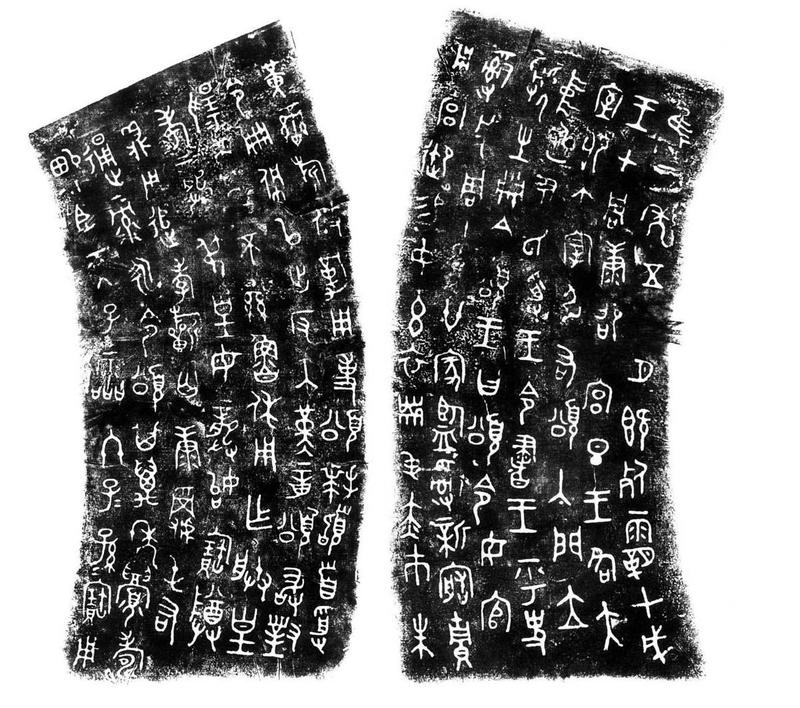
Rubbings of "Song Ding" collected by the Palace Museum in Beijing
The tripod has a round belly, a round bottom, two standing ears, and two string patterns on the belly. There is an inscription on the inner wall of the tripod with 14 lines and 152 words:
Only in May of the third year did he die and dominate Jiaxu,
The king is in Kangshao Palace of Zhou Dynasty. Dan, Wang Geda
room, ascend the throne. Zai Yinyousong gate stand
Zhongting. The Yin family gave the king a book of orders, and the king called for history.
Guo Sheng's Book of Destiny. The king said: "Song, order your official
Organize 20 stores in a week and supervise the construction of new stores
Use Gongyu. I give you Xuan clothes of pure, red and vermilion color.
Huang, Luan, Qi, Youle. Use things. "Praise, bow, and accept."
The fortune book is worn and taken out, but it is returned to Jinzhang. Psalm and dare to answer
Emperor Yang Pi showed Lu Xiu and used it as my emperor.
Examination of Uncle Gong and Emperor Mother Gong Si Baozun
tripod. Pursue filial piety and pray for Kang Chunyou
Tonglu and eternal life. Praise him for his long life,
The Emperor's spirit has passed away, and his descendants and descendants will be able to use it.
The main idea of the inscription: On the Jiaxu day in the second half of May in the third year, the king was in the Zhaowang temple in the temple of King Kang in the Zhou Dynasty. At dawn, Wang arrived at the hall of Zhaomiao and took a seat. As the benefactor, Zai Yin led Song into the gate of Zhaomiao Temple and stood in the courtyard. Yin handed the drafted appointment letter into the king's hands, and the king ordered the historian Guo Sheng to read it out. The king's appointment letter said: "Song, I order you to manage the warehouse of 20 subordinates and supervise the management of the newly built palace supplies warehouse. I will reward you with a black official jacket with embroidery and a bright red apron with red ribbon. Bells, flags and bridles for carriages and horses. Perform tasks." Pray, kowtow, accept the book of appointment, wear it before going out, and then return to the temple to pay tribute to Yongzhang. In order to thank and promote the emperor's great and profound kindness, he made a tripod to commemorate his deceased great father Gong Shu and mother Gong Si. It is used to commemorate filial piety and pray for health, generous help, smooth official career, and long life. May you live a long life and be a minister of the emperor for a long time and die a good death. This tripod will be treasured by future generations.
This inscription records the time, place, throne, appointee, etc. of the ordination ceremony in the Western Zhou Dynasty. It is an important material for studying ancient political history: 1. The King of Zhou ascended the throne; 2. The benefactor brought the ordained person into the temple gate. Standing in the court; 3. Yin showed the order book; 4. The historian read the order book; 5. The order book was divided into two parts, one was the appointment and the second was the list of rewards; 6. The order letter was worn and sent out; 7 , returned and presented the jade Zhang for the audience. The seven ritual notes here are very precious information for us to understand the ritual system at that time. Here we select the inscription from the largest of them for appreciation.
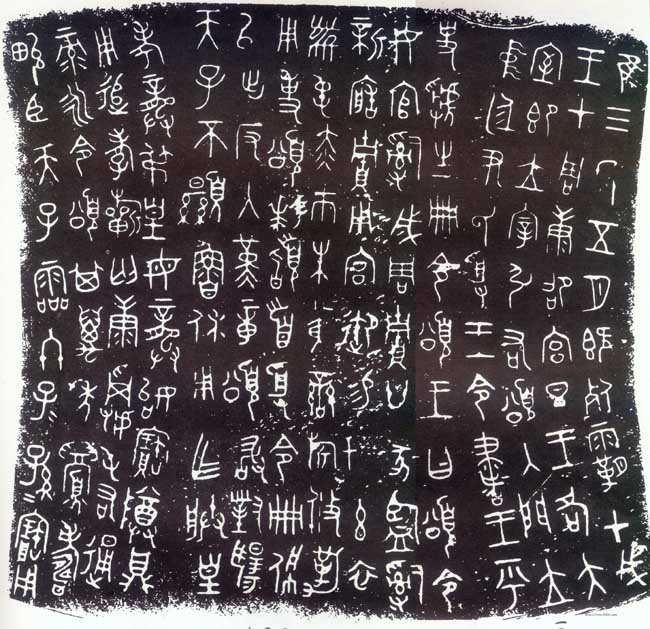
Rubbings of "Song Ding" collected by Shanghai Museum
The body is hemispherical, with a deep abdomen, a straight mouth with a round bottom, two erect ears, narrow folded edges, three hoofed feet, and two string patterns under the mouth.
[Inscription] Quan (Wei) died in May of the third year of the reign of Jiaxu, and the king was in the Kangxi Palace of Zhou Dynasty. On the first day of the twelfth lunar month, the king established his throne immediately. Zai Yinyou (you) praised the entrance and established the central court. The Yin family was awarded the king's order, and the king called Shi Guosheng to register the order and chant it. The king said: "Song, my daughter (order you) to be an official? (Si) to store twenty houses in Zhou Dynasty, supervise (Si) to build new ones, and store them for the palace." Yinu (gives you) Xuanyi, Qutun (chun), Chishi (韍), Zhuhuang (heng), (luan) flag, and you (sui)le, for use. Ode to?? (Bai Ji) first. After receiving the order, wear it and go out, but enter the Jinzhang (return to accept Jinzhang). Psalm? (Dare) to? (Yang) The emperor does not (Pi) show Lu Xiu, and uses Zha? (for my) Emperor Kaozuo Diao (Uncle Gong), and the Queen Mother Gongshi (Gong Si) Bao (Zun) tripod. Use "chasing filial piety", "Qi" (Qiu), "Tuenyou" (Chunyou), "Tonglu" (Tonglu), and "Yongling" (ming). Praise (his) ten thousand years (eyebrow longevity), (畯) minister to the emperor, Ji Dong (spiritual death), descendants and grandsons will use it.

